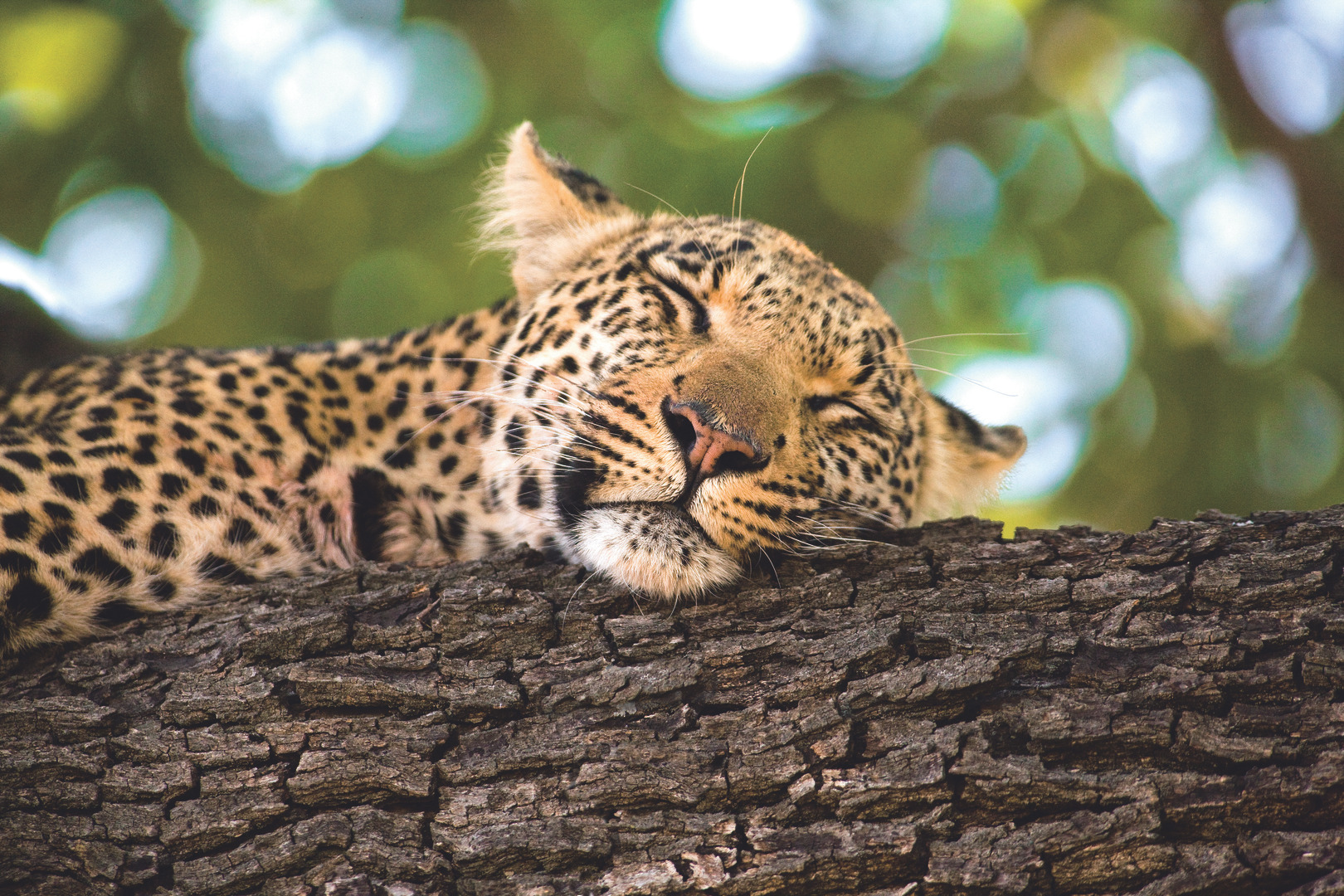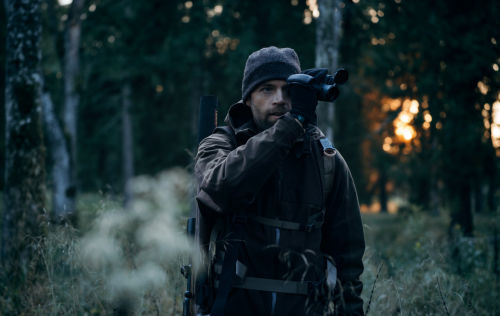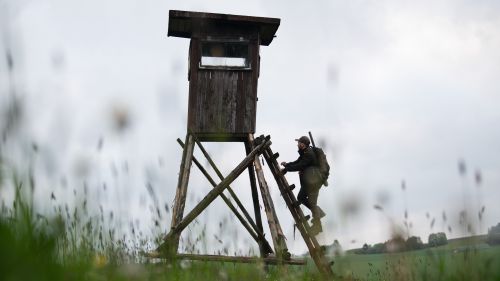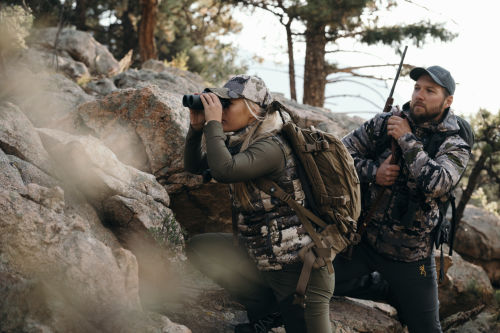HOW THE INTRODUCTION OF A COMMUNITY-BASED HUNT IN TAJIKISTAN BENEFITS BOTH THE ENDANGERED SNOW LEOPARD AND ITS PREY, MOUNTAIN SHEEP AND GOATS.
STEFAN MICHEL AND KHALIL KARIMOV
“WHEN I ASK HIM ABOUT THE SNOW LEOPARD AND ITS MAIN PREY, THE SIBERIAN IBEX HE ADMITS THAT MOST OF THE IBEX HAVE BEEN POACHED.”
SUMMER 2005
I’m with Amonsho, the head of the land use authority in Tajikistan’s Pamir Province, in the Gorno-Badakhshan Autonomous Region. Independence in 1992 and the ensuing civil war until 1996 has taken its toll on the country. The mountain villages of the Pamirs had no access to external supplies of fuel, and very little food. Even after the end of the civil war, supplies were meager, so the local people ended up cutting down almost every tree in the vicinity. The state forestry authority was powerless to prevent this deforestation and the theft of timber by organized gangs. This all changed in 2003, when villagers, supported by the German Society for International Cooperation (GIZ, then GTZ), took over the management of small alluvial forest areas. On the basis of contracts with the forestry company, they were allowed to replant trees, manage natural regeneration, and cut back young growth. After just a few years, this has led to dense thickets of willows, poplars, and seaberry. Amonsho tells me about an encounter with a snow leopard many years ago – on the mountain slope right in front of us. When I ask him about the snow leopard and its main prey, the Siberian ibex, he admits that most of the ibex have been poached. He even poached the odd ibex himself when food was scarce but there were plenty of guns and ammunition. When I ask what can be done to restore the populations of ibex and other species, he replies: “The same as the forest – people have to be given responsibility and usage rights in clearly defined areas. Then they’ll make sure there are enough animals again.”
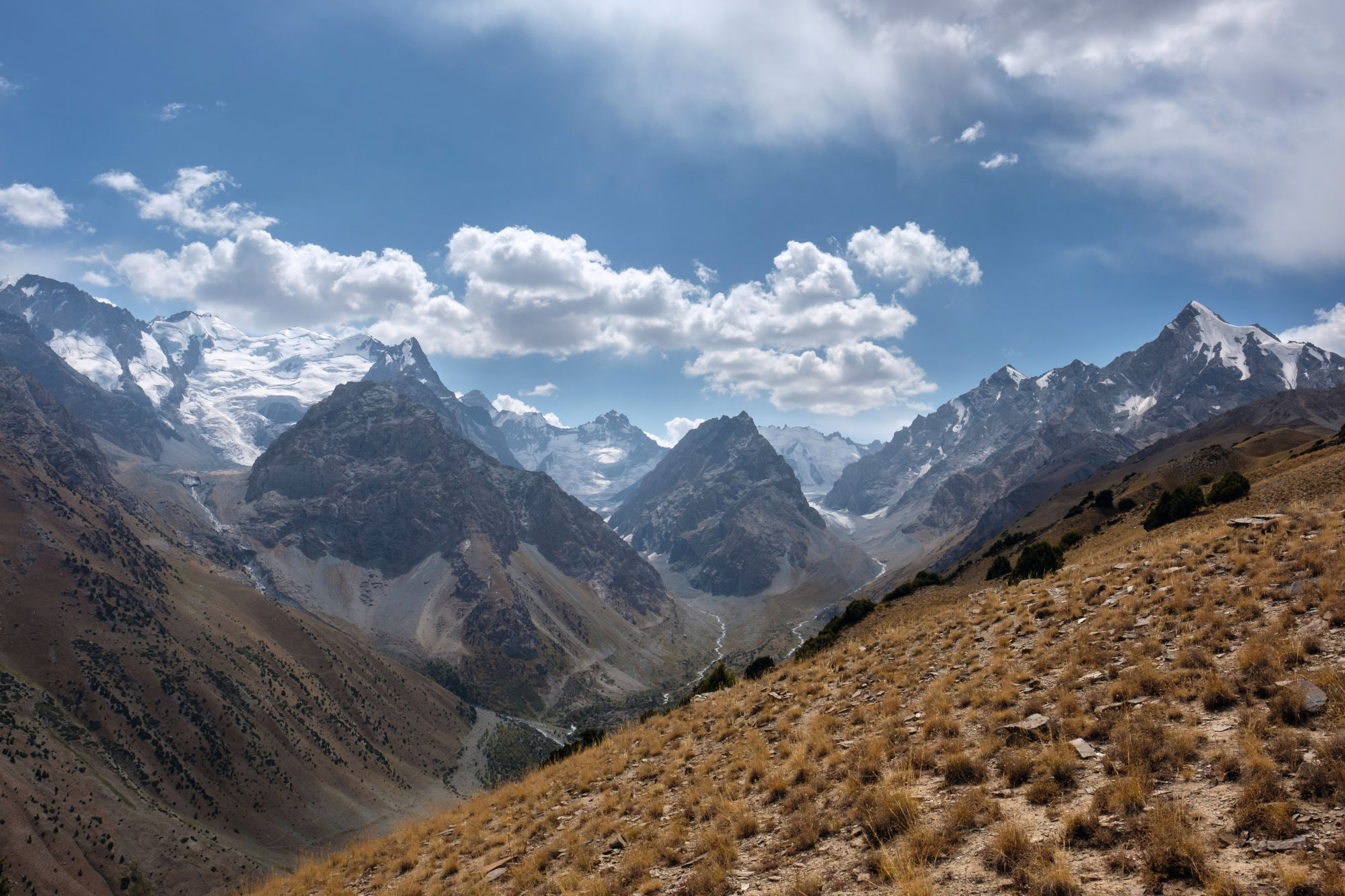
TAJIKISTAN
Consists mainly of high mountains and is home to four species of hoofed game: the Siberian ibex, the markhor goat, and the urial and argali wild sheep. The latter includes the famous Marco Polo sheep. On paper, the country has extensive protected areas but many habitats seem to be very sparsely populated. Game is still on the menu in many restaurants, and protected areas and hunting bans apparently have little effect. Amonsho’s words go round and round in my head. I talk to other villagers, scientists, nature conservation officials, and environmentalists but, with the exception of the villagers, no one can imagine how local poachers could be turned into gamekeepers. Despite this, I decide to give it a shot.




EARLY IN 2008
I move to Tajikistan, supported by the German government and project funding from the Zoological Society for the Conservation of Species and Populations (ZAGP). Here, I launch the Tajikistan Mountain Ungulates Project, gathering a team of dedicated local people who think it is possible to turn poachers into gamekeepers. Their grandparents, parents, or even they themselves have hunted ibex and wild sheep and seen how the populations have dwindled. Despite being officially protected, the urial has been hunted to extinction in the Pamirs. We visit remote mountain valleys and gather the local people together. Initially they deny the fact that their valleys have any game or hunters, but we soon break the ice and they explain their hunting methods and bemoan the declining populations. This latter fact becomes all too evident when we set out together to look for game. First they were wiped out in the local area, then became completely extinct.

FALL 2008
Just a few months after our meeting, the traditional hunters of the Ravmed Gorge set up a wildlife protection association and are formally assigned the rights and duties of protection and care in their mountain valley. More associations are formed over the following months and years. Where the markhor roams on the southwestern edge of the Pamirs, former hunters have set up family businesses and safeguarded key habitats for this species. The associations and family businesses have been given support in the shape of uniforms, field equipment, binoculars, spotting scopes, and GPS systems. They agree not to hunt until the stocks have recovered and to prevent poaching by other villagers and people from outside the area. This is difficult at first, because the poachers include police officers and other government officials. But soon the results become clear – poaching decreases in every area where there is a wildlife protection association or family business. The populations of wild goats and wild sheep begin to recover and even increase. Older bucks with impressive horns are seen more often. The animals are less shy and easier to spot. And the snow leopard makes a comeback because its prey has returned.
“WE VISIT REMOTE MOUNTAIN VALLEYS AND GATHER THE LOCAL PEOPLE TOGETHER. INITIALLY THEY DENY THE FACT THAT THEIR VALLEYS HAVE ANY GAME OR HUNTERS, BUT WE SOON BREAK THE ICE.”
The community gamekeepers aren’t motivated simply by their love of nature, but because they expect to receive material benefits. They don’t have to wait long until the first tourists arrive – not just to hunt ibex, but to see wildlife and enjoy unspoiled nature. Since 2014, a few markhor permits have been granted every year, and urial and Marco Polo sheep can be hunted for the first time. All this creates an income for the associations and family businesses and means the gamekeepers can be paid. It also funds local community projects, such as a new drinking water supply, school renovation works, the construction of houses for families who were left homeless by a flash flood, a solar power system for the hospital, and much more. A whole mountain valley has been leased so that Marco Polo sheep and ibex can breed there without being disturbed by domesticated species.
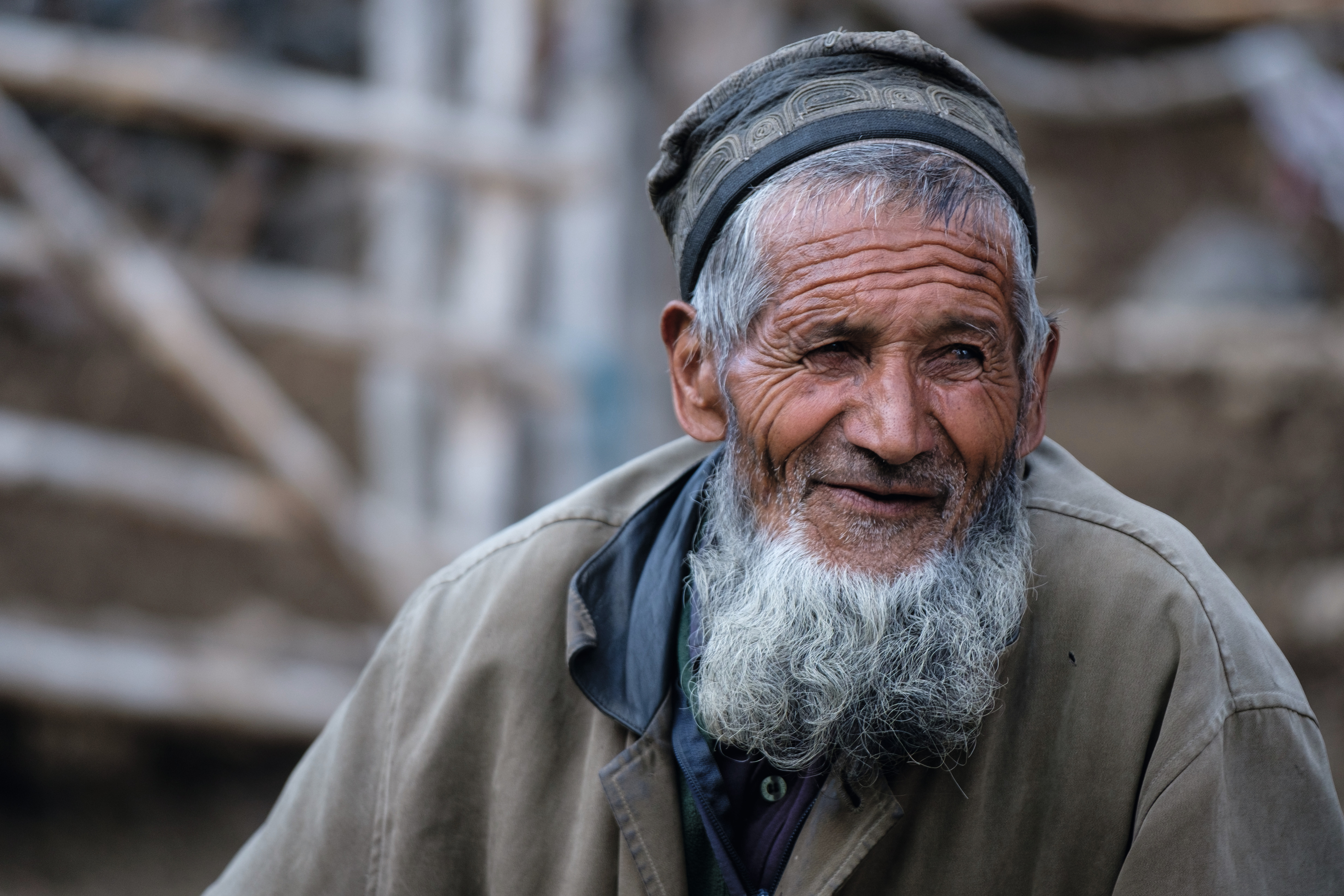
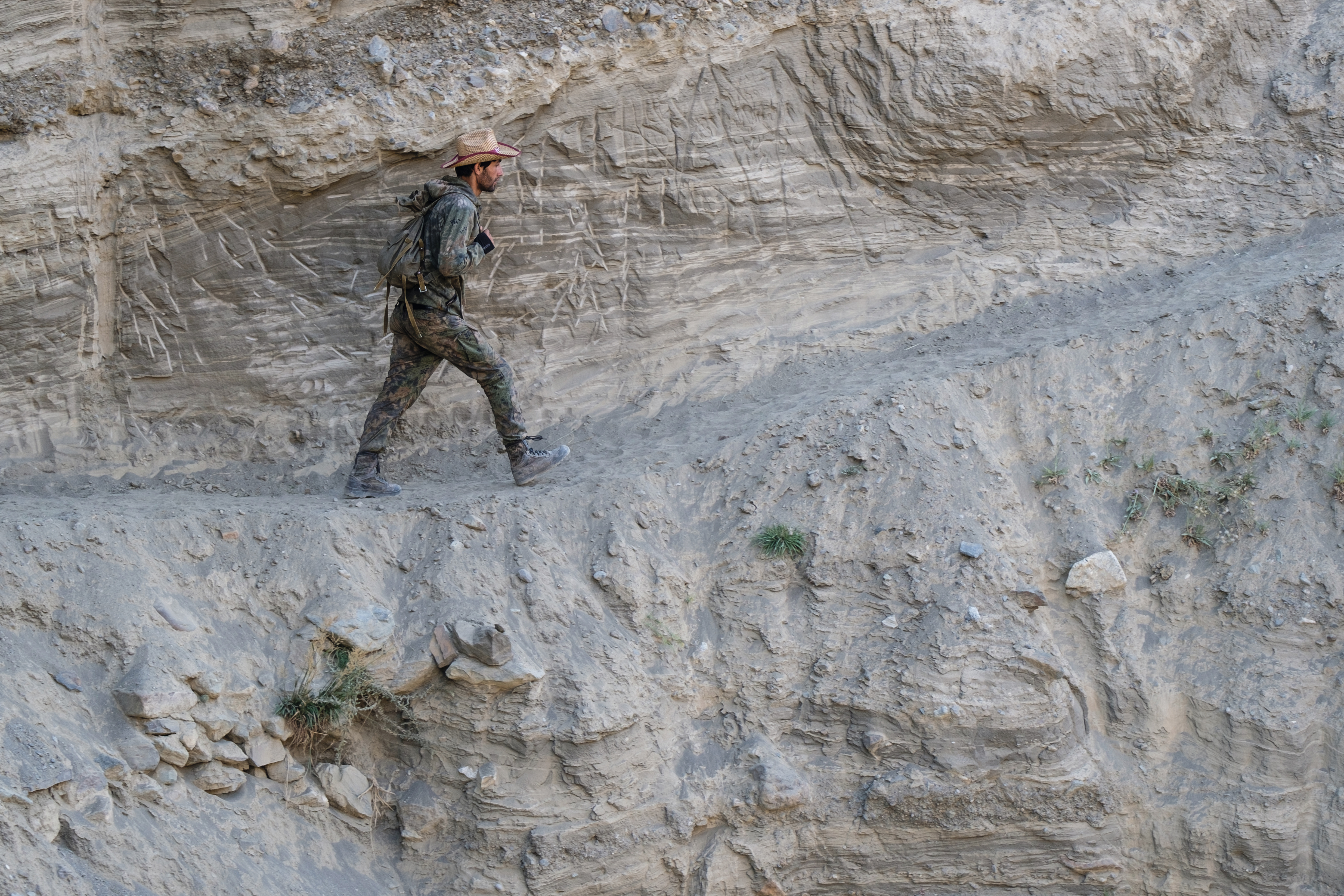
DECEMBER 2018
The eighth wildlife protection association is founded in the mountains of Tajikistan, in the upper Serafshan valley. Four associations are officially assigned game reserves under their care with a total size of some 250,000 hectares (618,000 acres). The other associat ions work on their allocation and begin introducing protection measures and population counts in other areas covering more than 150,000 hectares (370,000 acres). On top of this, the game reserves run by the family businesses cover the majority of the markhor’s range in Tajikistan, totaling another 100,000 hectares (247,000 acres).
My friend Amonsho is right! Preserving this treasure will depend on traditional local hunters continuing to have the rights and duties of managing the game in their local area, and on the income from hunting and tourism rewarding the efforts of local people to protect wildlife.

STEFAN MICHEL
is a biologist and conservationist who has been working in Central Asia since 1993. He has been instrumental in the development of community-based wildlife conservation in Tajikistan and is currently involved in a similar project in Kazakhstan.
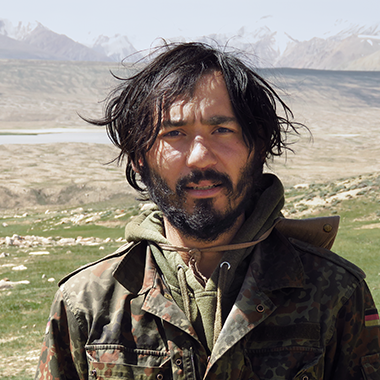
KHALIL KARIMOV
studied Veterinary Medicine in Dushanbe (Tajikistan) and completed his master’s degree in the Department of Wildlife Ecology and Management at the University of Natural Resources and Life Sciences, Vienna (BOKU). Since 2010 he has been working in community-based wildlife protection in his home country and advises community-based protected areas with the support of the Zoological Society for the Conservation of Species and Populations.
DID YOU KNOW?
TAJIKISTAN
Tajikistan is characterized by its barren mountain landscape. More than 90% of the country consists of hills and mountains and more than two thirds of the total area lies 3,000 meters (9,800 ft) above sea level. All the country’s activities revolve around its capital, Dushanbe (population: 780,000).
The local currency is the Tajikistani somoni (TJS), but many prices are also quoted in US dollars (USD). Hotels, hostels, and homestays in particular prefer to quote their prices in dollars and accept them as payment.
UNMISSABLE SIGHTS
In the east of the country lies its most famous and beautiful mountain range, the Pamir Mountains. This is also home to the famous Pamir Highway, one of the highest roads in the world, and also the country’s highest mountain, Pik Ismoil Somoni, with an elevation of 7,495 meters (24,590 ft).
The Fann Mountains on the border with Uzbekistan constitute the western foothills of the Pamir range, and are considered to be the country’s second great natural wonder.
The Fann Mountains are famous for their countless crystal clear mountain lakes that sparkle in countless shades of green and blue. A visit to the Seven Lakes near Margurzor (Haft Kul in Tajik) is a very special experience. In a stepped formation, the highest is 2,332 meters (7,651 ft) above sea level, and a crystal clear, icy river flows between the lakes.
UNMISSABLE FOOD
The national dish of Tajikistan is plov: rice with lamb, carrots, and onions. You should also try qurutob, a sour cheese with bread soaked in oil, garnished with tomatoes, cucumbers, and herbs.
Other typical Tajik dishes include laghman (noodle soup with meat and vegetables) and shashlik (grilled mutton).
